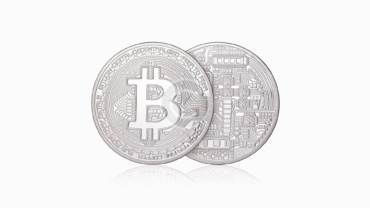
Treading presently in status, Bitcoin has moved into what some analysts call the ‘danger zone’ post its recent event of halving. The dynamics in the price of Bitcoin are closely watched by investors and traders as they try to work their way around this evolving landscape that the cryptocurrency market presents. This, however, means that volatility and turmoil can indeed face the whole market. The following article reflects on what this could mean for Bitcoin as it enters this ‘danger zone’.
The Halving Event and Its Impact
The Bitcoin network is designed to undergo what has popularly been called “halving,” a process that occurs every four years, reducing by half the rate at which new coins are issued. Hardwired into the code as an anti-inflationary measure and supply restriction, these events have habitually been followed by periods of increased price volatility and market turbulence.
The most recent halving, back in May 2020, reduced the block reward from 12.5 BTC to 6.25 BTC per block. Everyone had been expecting this event to be bullish for the price of Bitcoin, but the post-halving has rather been marked by extensive consolidation and uncertainty – with Bitcoin just struggling to hold on to any reasonable upward momentum in price.
Entering the ‘Danger Zone’
Analysts and traders attributed a few reasons for Bitcoin to enter the perceived ‘danger zone’. These include:
- Technical Indicators: Evidence from technical analysis tools and indicators shows that Bitcoin could enter into a high-risk phase. This is especially evident through indications provided by the RSI and Moving Averages, among other indicators.
- Market Sentiment: The market sentiment for Bitcoin has waxed increasingly cautious amid concerns over regulatory crackdowns, geopolitical tension, and uncertainty over macroeconomics that dent investor confidence.
- Lack of Catalysts: In the absence of large catalysts or any positive news events that could catalyze the price action higher for Bitcoin, stagnation begins to set in within the market as traders await convincing signals of bullish momentum.
- Increased Competition: The competition is still growing amidst fast growth, mainly due to the increasing role of alternative cryptocurrencies, otherwise called altcoins, and secondly, because of decentralized finance projects. Some investors have actually diversified their investment portfolios in pursuit of higher returns in other assets.
How to Cope with the Challenges?
The very fact that Bitcoin has passed through this so-called ‘danger zone’ means that all investors and traders must therefore be more cautious in their exposure to the cryptocurrency. Basic things one should keep in mind include:
- Risk Management: Putting in place prudent risk management practices will go a long way toward minimizing the possibility for loss during any period of high volatility. These would involve the establishment of stop-loss orders and portfolio diversification.
- Staying Informed: Knowledge of market developments, regulatory news, and macroeconomic trends will provide a serious edge in understanding the probable trends and reversals within the market.
- Long-Term Perspective: Having a long-term outlook upon the fluctuation, Bitcoin is to be invested in on account of scarcity, network security, increased usage, and understanding that will help him or her stay through short-run changes in value.
- Seeking Expert Advice: You can take advice from reputed analysts, financial consultants, and industry experts that may give additional support and tips on how to handle the capricious market.
Conclusion
While Bitcoin does indeed have its fair share of problems and uncertainties going into this ‘danger zone’ post-halving, the road ahead could prove precarious, paved with volatility and risk. On the other side, investors and traders who would be able to go equipped with good risk management strategies, better decision-making, and a long-term view will have no problem steering through the ever-changing landscape of the cryptocurrency market and reaping benefits presented by the world’s leading digital asset.





